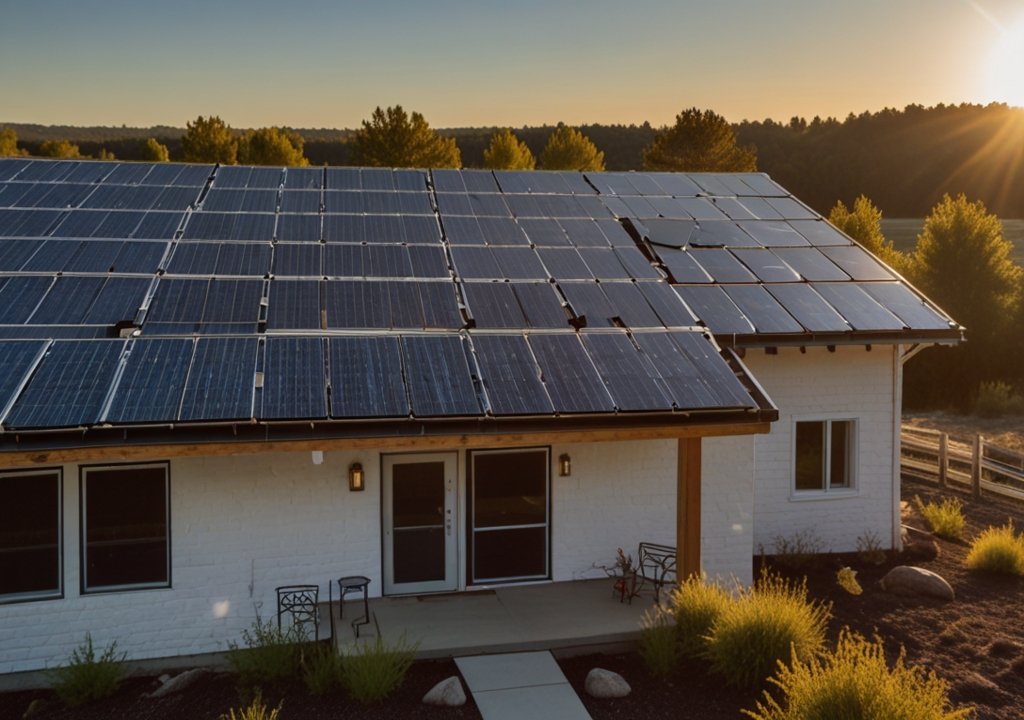Key Takeaways:
- Understanding the basic concept of the Federal Solar Tax Credit
- Identifying the eligibility criteria for homeowners and businesses
- Exploring the long-term benefits of investing in solar energy
Introduction to the Federal Solar Tax Credit
The federal solar tax credit, often known as the Investment Tax Credit (ITC), is one of the most significant instruments for encouraging the use of solar energy in various US businesses. Since its inception, the credit has lowered the upfront costs for thousands of households and companies, making the transition to renewable energy viable for many. This major tax incentive allows homeowners and commercial entities to deduct a sizeable portion of their solar installation costs from their federal taxes. The solar panel tax credit is more than a financial instrument; it symbolizes a larger movement toward sustainable practices and energy independence, underscoring the nation’s dedication to lowering carbon emissions and promoting a more environmentally conscious international society.
How the Solar Tax Credit Works
Offering a tax credit that pays a portion of the cost of constructing a solar energy system is the main way that the ITC operates. Initially set at 30%, the rate will incrementally decrease over the next few years as planned by federal authorities. It’s important to understand that the credit applies directly to your tax returns, reducing the amount you owe dollar for dollar. For instance, a $5,000 expenditure on solar panel installation may yield a $1,500 tax credit, lowering the net cost of your investment. This design not only makes solar panel installation more accessible but also boosts consumer confidence in renewable energy solutions.
Eligibility Criteria for Homeowners
To be eligible for the tax credit, homeowners who wish to claim the ITC must fulfill certain requirements. The solar energy system must be owned outright or financed through an appropriate loan facility. Unfortunately, those leasing solar panels or engaging in power purchase agreements may be ineligible under current guidelines. Additionally, the solar panel system must be installed at your primary or secondary residence in the United States. For those on the fence about buying versus leasing, it’s beneficial to understand how arrangements like solar leases stack up against direct purchases regarding long-term financial implications and immediate eligibility for federal tax credits.
Requirements for Businesses
Businesses eyeing the tax credit must navigate several requirements to ensure they qualify. The steps involve meticulous documentation of all solar installation costs alongside proof of ownership or solar system financing. Business entities can capitalize on this incentive to alleviate operational expenses and redirect savings toward other growth areas. Moreover, businesses must adhere to IRS guidelines, stipulating eligibility based on system ownership, installation dates, and safety standards. By fulfilling these requirements, companies may profit monetarily and contribute significantly to the transition to renewable energy.
The Long-Term Financial Impacts

Investing in solar panels provides a duality of immediate and long-term financial benefits. In the short run, homeowners and businesses can significantly reduce installation costs due to the tax credit. Over the lifespan of the solar panels, which often extends beyond two decades, users can expect a sharp decrease in their electricity bills. This reduction offers a return on investment that, in many cases, surpasses the initial expenditure. For those keen to understand their potential long-term savings, exploring various renewable energy calculators helps provide tailored insights into individual scenarios.
Environmental Benefits
While the economic incentives are robust, the environmental advantages of solar energy adoption are even more compelling. By drastically reducing reliance on fossil fuels, solar panels help minimize greenhouse gas emissions. This more environmentally friendly option adjustment aligns with national and international goals to slow environmental deterioration and fight climate change. As solar technology advances, its integration is poised to impact achieving sustainable energy goals that prioritize ecological health substantially.
Steps to Apply for the Credit
Applying for the federal solar tax credit involves carefully executing steps to ensure compliance and maximum benefits. Here’s a simplified route:
- Download and complete IRS Form 5695 for the specific year your solar system was installed.
- Organize all relevant receipts and installation documentation to support the claims made on the form.
- Consider speaking with a tax expert to manage complexity and improve your tax status.
Adhering to these steps can prevent common errors that lead to delays or denial of benefits, streamlining the application process significantly.











